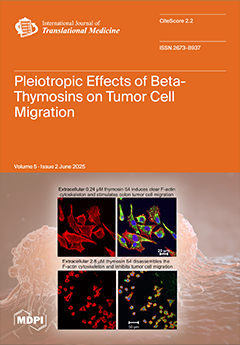Open AccessArticle
Identifying High-Risk Bacteria with Active Nasal Swab Surveillance in Intensive Care Units to Prevent Ventilator-Associated Pneumonia
by
Yu Kuramasu, Yu Suzuki, Daisuke Akaneya, Yoshikazu Okuma, Yuta Tsujimoto, Daisuke Ishizawa, Kazunori Moriya, Parichart Hongsing, Mohan Amarasiri, Cameron Hurst, Paul G. Higgins, Kenji Shibuya, Anthony Kicic, Yoshitaka Shimotai, Hiroshi Hamamoto, Dhammika Leshan Wannigama and Shuichi Abe
Cited by 2 | Viewed by 1476
Abstract
Background: Active nasal surveillance culture (ANSC) is recognized to enable rapid detection of antibiotic-resistant bacteria in the intensive care unit (ICU), which can contribute to the prevention of Ventilator-associated pneumonia (VAP). This study aims to evaluate the usefulness of ANSC in assessing the
[...] Read more.
Background: Active nasal surveillance culture (ANSC) is recognized to enable rapid detection of antibiotic-resistant bacteria in the intensive care unit (ICU), which can contribute to the prevention of Ventilator-associated pneumonia (VAP). This study aims to evaluate the usefulness of ANSC in assessing the development of VAP in ICU patients. Methods: Patients admitted to the Yamagata Prefectural Central Hospital ICU from January 2017 to 2018 (Term 1) or January 2020 to December 2021 (Term 2) and underwent invasive mechanical ventilation supports were eligible for this study. Nasal swab samples were collected from the patients upon their admission to the ICU. The diagnosis of VAP was made according to the criteria set by the Centers for Disease Control and Prevention. Results: A total of 467 patients (156 women) in term 1, and 312 patients (113 women) in term 2 were enrolled. The incidence of VAP in term 2 was higher than in term 1 (7.1% vs. 12.8%, respectively). ANSC isolated several causative pathogens from the patients on admission who later developed VAP.
Haemophilus influenza,
Streptococcus pneumoniae,
Stenotrophomonas maltophilia,
and Pseudomonas aeruginosa had a 100% match rate with the sputum culture, indicating a perfect relation between ANSC results and sputum culture in VAP (+) cases. Conclusions: The isolation of high-risk bacterial species by ANSC could foresee the development of VAP in ICU patients and efficiently prevent VAP in critically ill patients.
Full article
►▼
Show Figures




